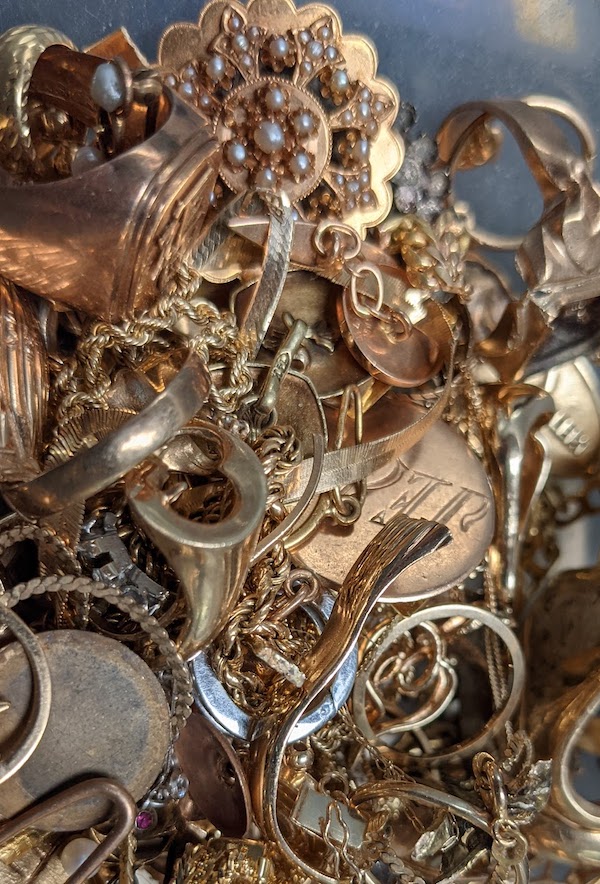With competitive prices and honest service, we are one of the best places to area. We accept walk-ins or you can make an appointment to sell your coins, paper money, gold, silver, estate jewelry, and diamonds! Phone number (847) 213-0507
Gold is a highly sought-after metal that has been used for making jewelry for centuries. The purity of gold is measured in Karats, which is a unit of measurement that indicates the amount of pure gold present in the alloy. Understanding how Karats in gold jewelry work is essential for anyone interested in buying or selling gold jewelry.
What are Karats?
Karats are a measure of the purity of gold, and the unit is denoted by the letter ‘K.’ Pure gold, also known as 24K gold, is 100% gold, and it is too soft to be used in jewelry. Hence, it is mixed with other metals, such as silver, copper, and zinc, to make it more durable and workable. The resulting alloy is then given a Karat rating based on the percentage of pure gold it contains.
For example, 18K gold is made up of 75% gold, while the remaining 25% is made up of other metals. Similarly, 14K gold is made up of 58.3% gold, while the remaining 41.7% is made up of other metals.
How do Karats affect gold jewelry?
The Karat rating of gold jewelry has a significant impact on its appearance, durability, and value. Higher Karat gold jewelry is generally more expensive and appears brighter and more vibrant in color. This is because higher Karat gold has a higher percentage of pure gold, which gives it a richer and more intense hue.
However, higher Karat gold jewelry is also more prone to scratches and damage due to its softness. Lower Karat gold jewelry, such as 10K gold, is more durable and less likely to get scratched or damaged. However, it may appear less lustrous and have a more muted color.
How can you tell the Karat rating of gold jewelry?
The Karat rating of gold jewelry can be determined by looking at the hallmark or stamp on the piece. In the United States, the Federal Trade Commission requires all gold jewelry to be labeled with its Karat rating. The hallmark or stamp is usually found on the inside of a ring or on the clasp of a necklace or bracelet.
The Karat rating can also be determined using a Karat meter, which uses X-ray technology to measure the purity of gold. However, this method is expensive and is usually only used by professionals in the jewelry industry.
In conclusion, understanding how Karats in gold jewelry work is crucial for anyone interested in buying or selling gold jewelry. The Karat rating of gold jewelry determines its appearance, durability, and value, and it can be determined by looking at the hallmark or stamp on the piece. With this knowledge, you can make informed decisions when buying or selling gold jewelry.
How to use Karats to measure gold purity in the real world.
Here is how to use the number of karats to figure out how pure your gold is: If you purchase a ring that is 14K gold, since the highest amount of karats you can have is 24K, divide the 14 karats by the 24. You will get .583. This means that the gold is 58.3% pure in a perfect world. In reality, jewelry gold purity can vary 10 to 20% (usually toward the lower end).
